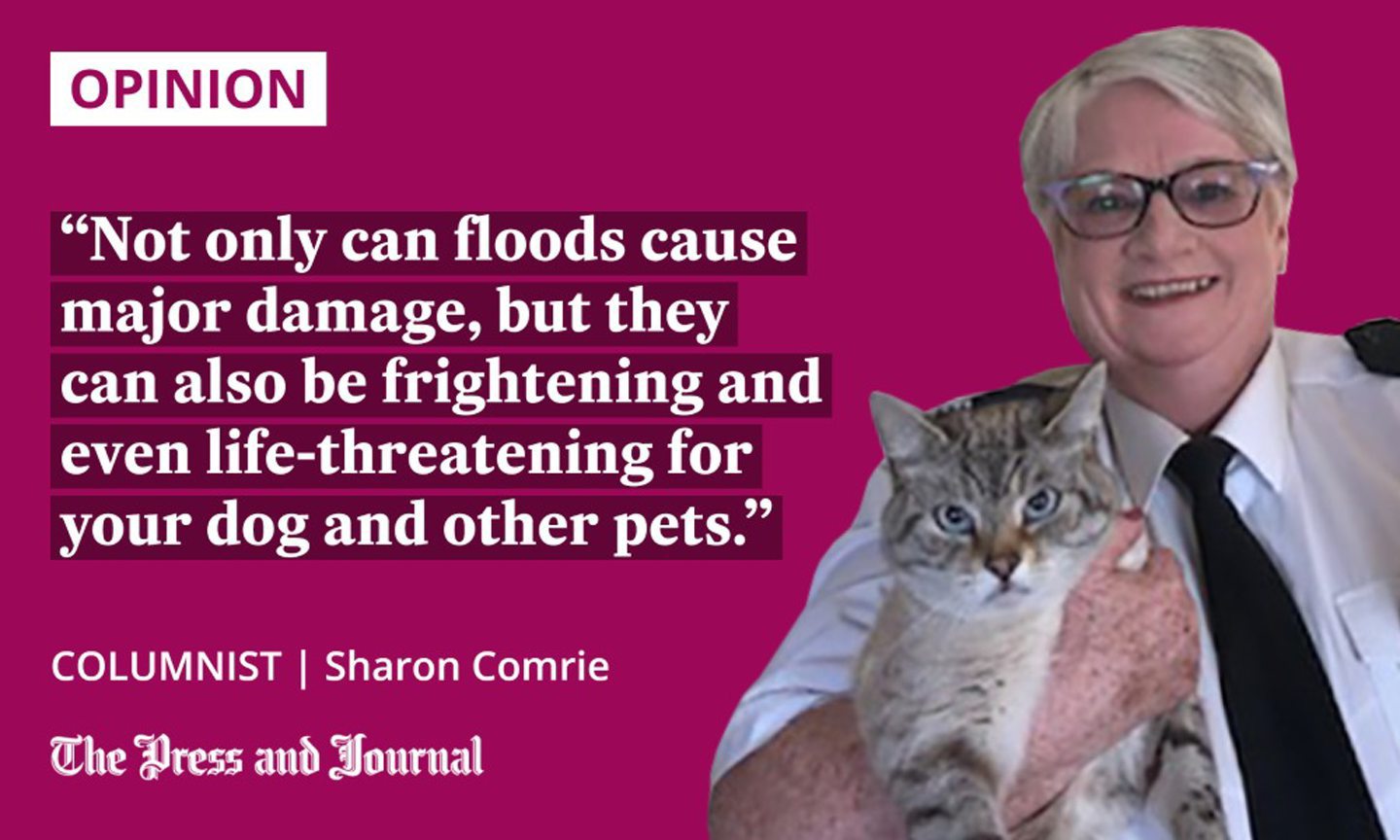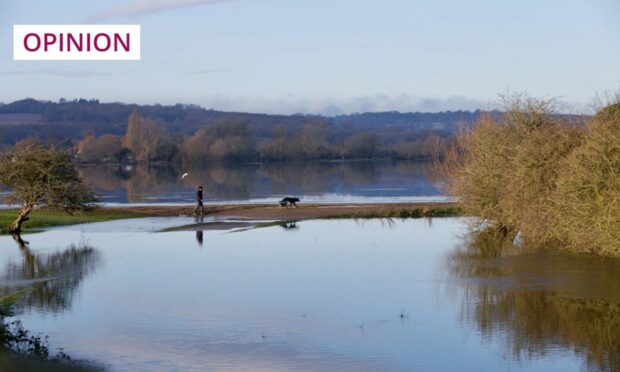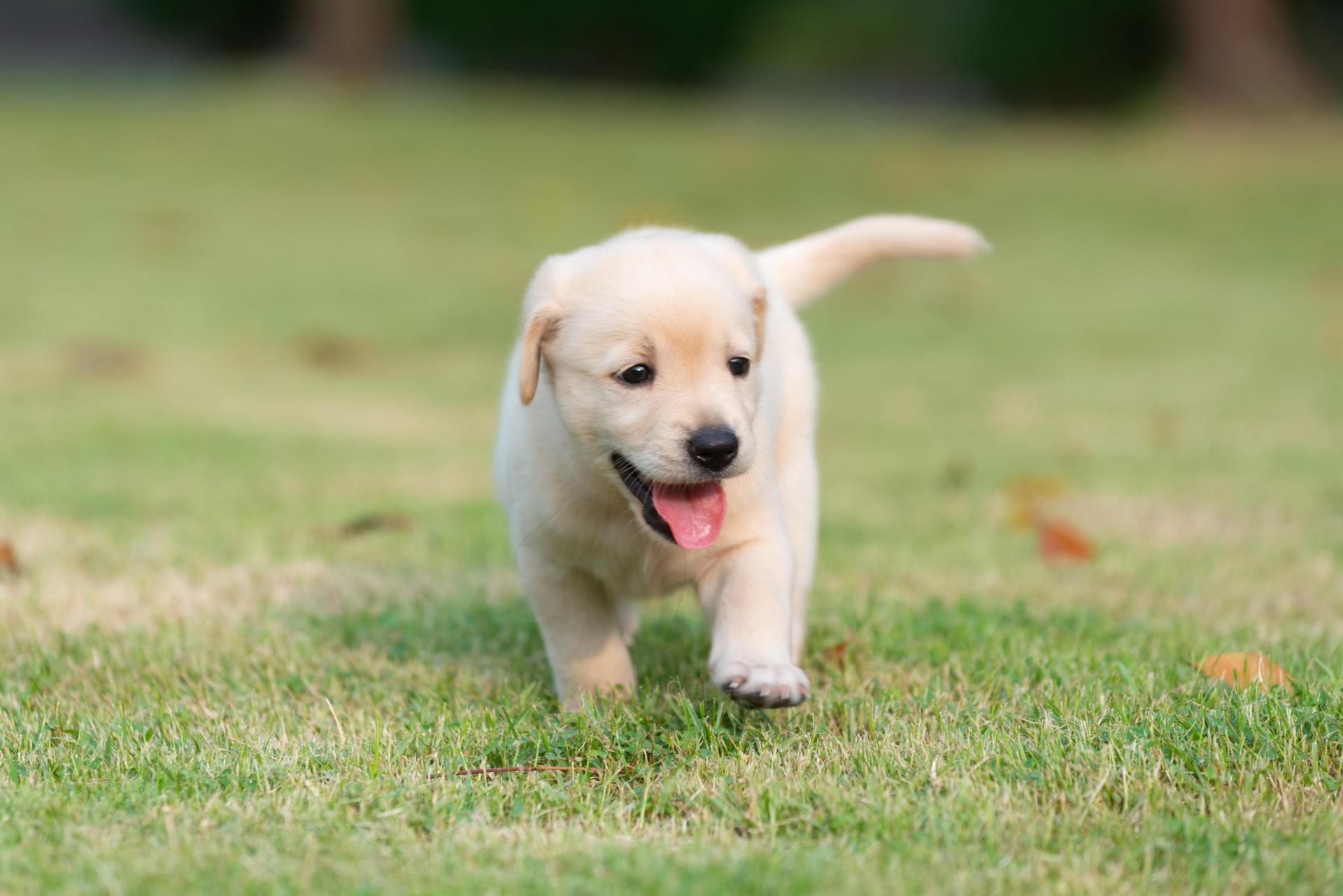Not only can floods cause major damage, but they can also be frightening and even life-threatening for your pets, writes Sharon Comrie of the Scottish SPCA.
Given how wet the weather can be at this time of year, I would like to give some flood safety tips for pet owners.
Floods have the unfortunate distinction of being the most common natural disaster. They can develop slowly, as a result of rain or snow, or they can come on quickly and with no warning, as in the case of flash floods.
Not only can floods cause major damage, but they can also be frightening and even life-threatening for your dog and other pets.
During a flood, your initial reaction may be to wait it out at home. That may or may not be the best option for you and your pet. Weigh both options up thoroughly, and stay informed.

For the latest information on potential flooding, you can call the Floodline number 0345 988 1188, visit the Sepa website, or check your local authority’s guidelines.
As much as we all love our pets, it’s important to never put yourself or others at risk to try to rescue an animal.
What to do if your home is flooded
To reduce the chances of something going wrong, don’t leave your pets outside or tied up or on the lowest level of your house during a flood. Move to the highest floor possible and stay together. Use a pet carrier for smaller animals and birds.
Follow evacuation directions from local authorities, and do not veer off route. The longer you wait, the bigger the risks are for your pets.
Don’t let your animals outside without a leash immediately following a flood. There may be broken glass, nails, sharp sticks, or other dangerous objects that could hurt them.
Keep pets away from floodwater
Even if your home isn’t affected by flooding, be sure not to walk your dog in floodwater. Just six inches of moving water is strong enough to knock your dog down – and you! On top of that, many dogs are not natural swimmers and can panic if put in such a situation.
If your pet does get wet, don’t let them stay that way for too long. Wetness can cause inflammation of the skin, which is a breeding ground for bacterial and fungal infections.
Don’t let your dog or cat drink floodwater. Chemicals, sewage, fuel, and other substances may have contaminated water sources. Give them bottled water until authorities tell you the water is safe to consume.
And, finally, don’t panic. The calmer you are, the calmer your pet will be.
The Scottish SPCA advice is to never put your own life in danger to attempt an animal rescue. If you see an animal outside that looks like it’s suffering or in danger contact our Helpline on 03000 999 999.
Sharon Comrie is community and engagement manager for the Scottish Society for Prevention of Cruelty to Animals (SSPCA)



Conversation